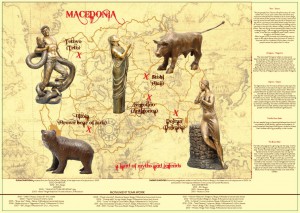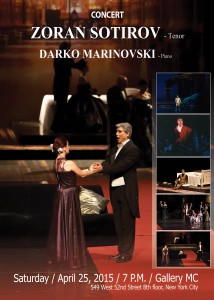Artists in Residence: Sadiku & Mexhiti
The sculptor, Muamer Sadiku, has been continuously cultivating concrete figurative sculpture as well as the abstract one. By not abandoning the realistic forms, which show up in some of the projects of realistic monumental sculptures of public character, he has been doing works with the same dedication that exceed reading visual nature.
Special place in his works take the realizations with stylistic and synthetics sculptural figures. Such determination the author expresses at the recent realization cycle. In this cycle, which somehow is a continuation of his master project, the author proves affinity in passing the line of figure transformation.
The works present thematic projections expressed as complete plastic with mobile character. Especially, it is expressed the sensibility towards the external processing of the sculptures, in which dominate the mathematical superficies, as a dimension of thematic intimacy. The majority of the sculptural works show symmetric interconnection between each other, so the ones in space can stay in line with each other. They are concrete sculptural realizations which prove the continuous known language of this creator. The author has focused his research in defining the expressive sculptural forms.
From the figurative aspect he remains faithful to the close forms which are usually used in the three-dimensional spaces, especially using the vertical form as one of the basic orienting lines. The vertical orientation – means growth, greatness, spirituality.
In some of his sculptural works, it is much evident the erotic association as a self-motive. In the aspect of manuscript, it is seen that the author uses experiences of some certain (post) modern trends creating thus a stylistic weaving. The model realizations present cubic-abstract expressions transformed in simplified cylindrical figures, followed by sequences of assemblage described also by premises of associative symbolism. But, seen from the post-modern point of view, these metaphorical forms look like tenting towards an abstract expressionism variant, resembling the archetype of the modus of the totem in a variety of sculptures.
The sculptures of this cycle are of small dimensions and are appropriate for closed environments, or in other words, the author brings cameral sculptures. But, the same are premeditating in such a way that they can be implemented also in an open sky of supernatural dimensions.
The sculptural forms have the anthropomorphic background, zoomorphic, where the eroticism of the figures can be noticed. In the technical aspect, we should remember that the sculptor has implemented a several-steps process until the realization of these sculptures, using several materials of the modern technology, where synthetic ones dominate, such as: styrofoam, put on polyester, followed also by rods, metallic armature fragments (iron), textile fabric etc.
Dr. Mixhait Pollozhani
An Aesthetic enjoyment of permanence
Any form conveys and imparts a special quality of being. An aesthetic of a simple artistic work might overlap in some form, in which case it requires any relation with the formal language of the offense, as demonstrated in the art of painter Bashkim Mexhiti. Such appearances are simply inner time artistic work but with perennial theme. On the other hand, involves symbolic acts of Mexhiti which is in the form presented , because it has vivid colors, fast moving brush and hand skills, but it is also invisible, imaginative, because there is an analogy strictly between form and spirit.
Abstract vision necessarily finds itself expressioned in a particular language formal paintings made with acrylic on Mexhiti`s fabric. His paintings tend to emphasize that this artistic language can not be considered as the forgotten and wrapped with postmodern slogan “anything goes”. Antiquity is the mother of artistic feelings of the author, and the dynamics of composition inside is the child of time where he lives and works.
It is right that abstraction in itself is independent by forms and this means that it can not easily be expressed or transmitted by any and every form. Through qualitative own essence, the form has a place in susceptibility order, similar to the truth, in intellectual order. Just as mental form, as of the idea`s or experiencing, however limited, it (form) can become an adequate reflection, albeit limited, of an eternal truth, so a sensible form can retrace a truth or a reality transcedentation, \both the plan of sensible forms and the plan of the idea .
In the detection proces of physical characteristics of Mexhiti paintings, bystander observes color, shape, size and mimetic position of reflecting what can not be said except that through art. Bystander simultaneously with vivid colors, often to mix the blue feeling and depth, so that there can not establish that you are in the heavenly heights or depths of the sea, sometimes it flies like a bird in search of Phoenix andsometimes in the form of divers that searches for pearls of the essence of existence following the length and breadth of time and space.
If visual experience of reality would be presented as a continuum, then at one end of the work of nice and deep paintings of Mexhiti will experience an objective spectrum, in which can be evaluated explicitly physical characteristics, while at the other end will feel subjective spectrum , which will evaluate implicit properties and affective virtues of beholded objects . Even the first and the second have their important role in the functioning of the human being ,a reality that Bashkim Mexhiti`s work makes more pragmatic.
No doubt that a word feels poor compared to the greatness of beauty and an artistic and aesthetic narration of Bashkkim Mexhit1s paintings
Metin Izeti


